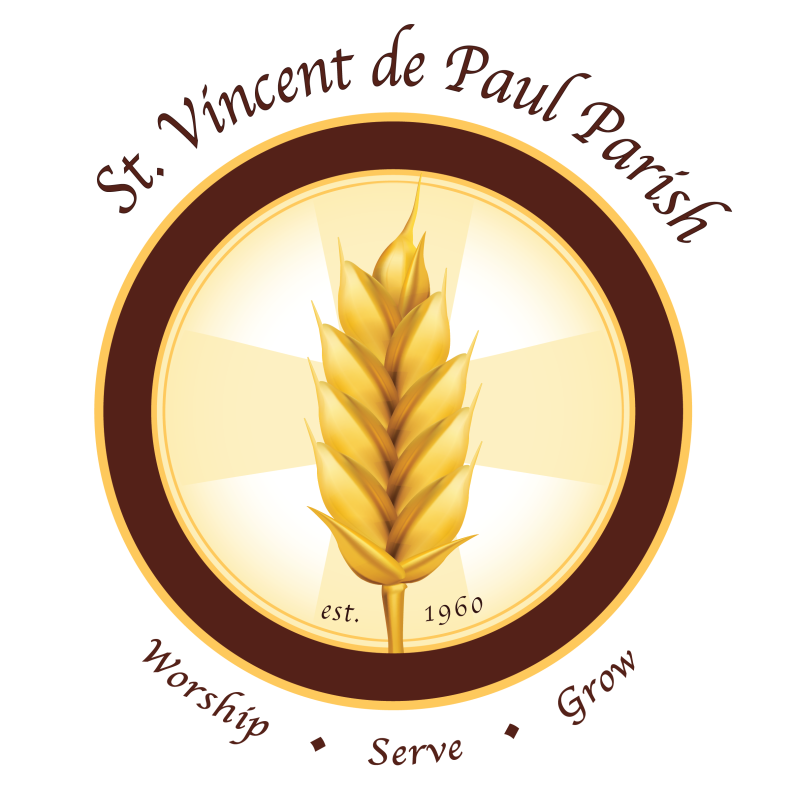Stained Glass Meaning
God is One
“Hear, O Israel! The LORD is our God, the LORD is one!”
Deuteronomy 6:4
This window depicts the symbol of love, the heart, since the source of our being is God loving us.
St. Thomas Aquinas taught that saying: “God is One” is to say that God does not depend on matter (or anything) for existence, but is incorporeal and infinite. “God is being itself, subsistent, absolutely undetermined. But God is supremely undivided inasmuch as God is divided neither actually nor potentially, by any mode of division; since God is altogether simple, Hence it is manifest that God is one in the supreme degree” (Summa I, Q 11, A 4).
To say, “God is One” is to say God is the source of all being: “For in you we live and move and have our being.” (Eucharistic preface) And since God is infinite, our being is somehow connected to the eternal, as the preface says: “and while in this body we not only experience the daily effects of your care, but even now possess the pledge of life eternal.”
Our existence this very moment is the result of God loving us — this very moment. Even when our physical bodies die, God continues to love us, continues to be the source of our being for all eternity.
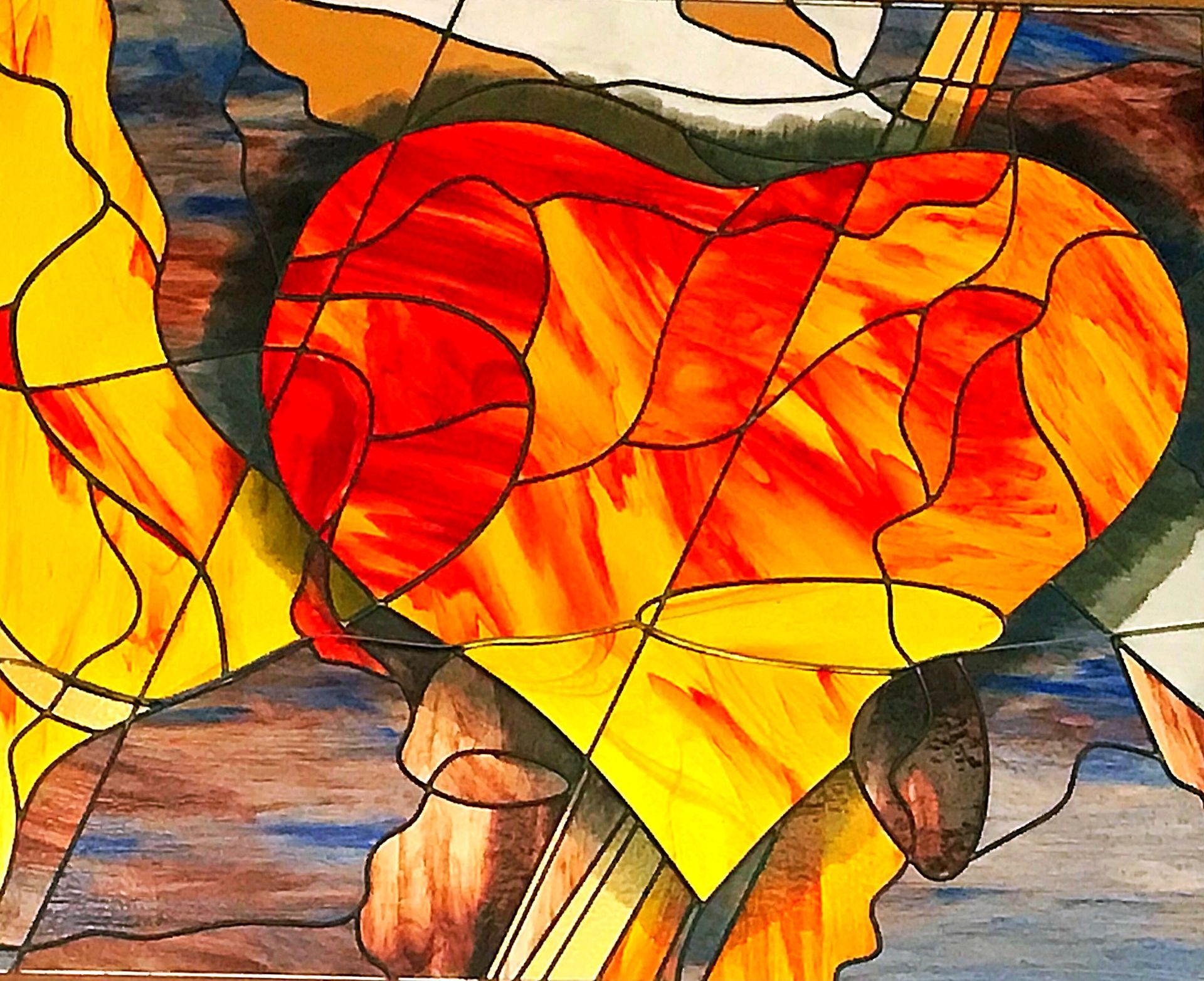
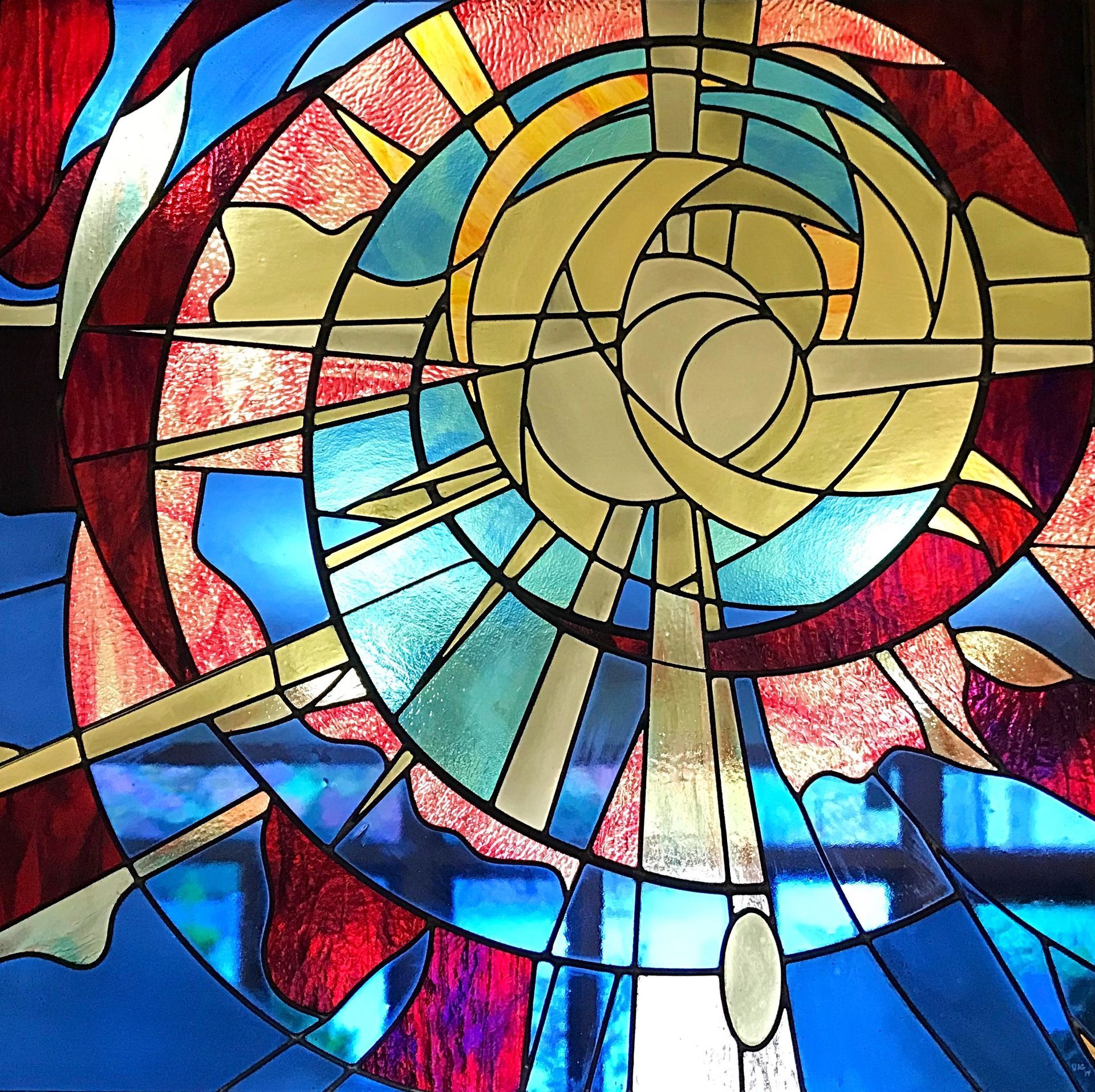
God is True
“But when He, the Spirit of truth, comes, He will guide you into all the truth”
John 16:13
This window’s brilliant cross, radiating outward, represents truth. It could also be interpreted as drawing inward all that is true, so that the cross is the ultimate expression of truth.
We live in a world where truth is sought less and less — we now use terms such as “alternative facts” and “fake news.” Falsehoods and lies invade the internet. Many want to determine their own truth and decide for themselves what is right and wrong.
“Not only is truth in God, but that God is truth itself, and the sovereign and first truth,” St. Thomas Aquinas said. If all of creation is the work of God, then it must reflect the truth of God. God is the ultimate measure of what is true and what is false. Jesus expressed himself as “the way, the truth and the life.” Yet, like unity, we struggle to discover truth, always searching for more complete understandings of what is true or not true in life. We can only meet with partial success, even though the human mind is constantly shifting and sorting information to find out if it is true. We cannot help ourselves, yet what is ultimately true transcends us. The desire for truth invites us to the Love that we call God.
What is that truth? Could it be the God so loved the world that he gave us the Son? The truth of existence is that we are loved by God.
God is Good
“Be perfect just as your heavenly Father is perfect”
Matthew 5:48
This window depicting the goodness of God shows a human becoming perfect, having a glorified body like Christ’s when we will be fully actualized and be who we are meant to be.
God is good because God is perfect and because God creates. All creation is being made perfect and so the good is present partially in all creation. For St. Thomas, a thing is good insofar as it is perfect; that is, we may assess the goodness of a thing according to how far it is along the path from its potentiality to its actuality. All created things seek their perfection. In moving toward their perfection, things are moving toward a likeness of the efficient cause of that perfection.
In striving to become more whom we are meant to be, we become more God-like. The efficient cause of that perfection must be thought of as good. God is the first efficient cause of every created thing; therefore, goodness must be ascribed to God. “God is called good ‘as by Whom all things subsist.’” Since God is perfect, goodness is of the essence of God; and only God is essentially good. In the gospel, Jesus even said when called good, “Who is good but God alone?
It is love that motivates us to be our best selves, both the love of another and the love of God. When we say, “God is Good,” we are being drawn by our heart’s desire to the one who is creating us. We are participating in God’s goodness by being the best self we can be, mirroring the love of God. In the Book of Genesis, when God made the human being God said this is “very good.”
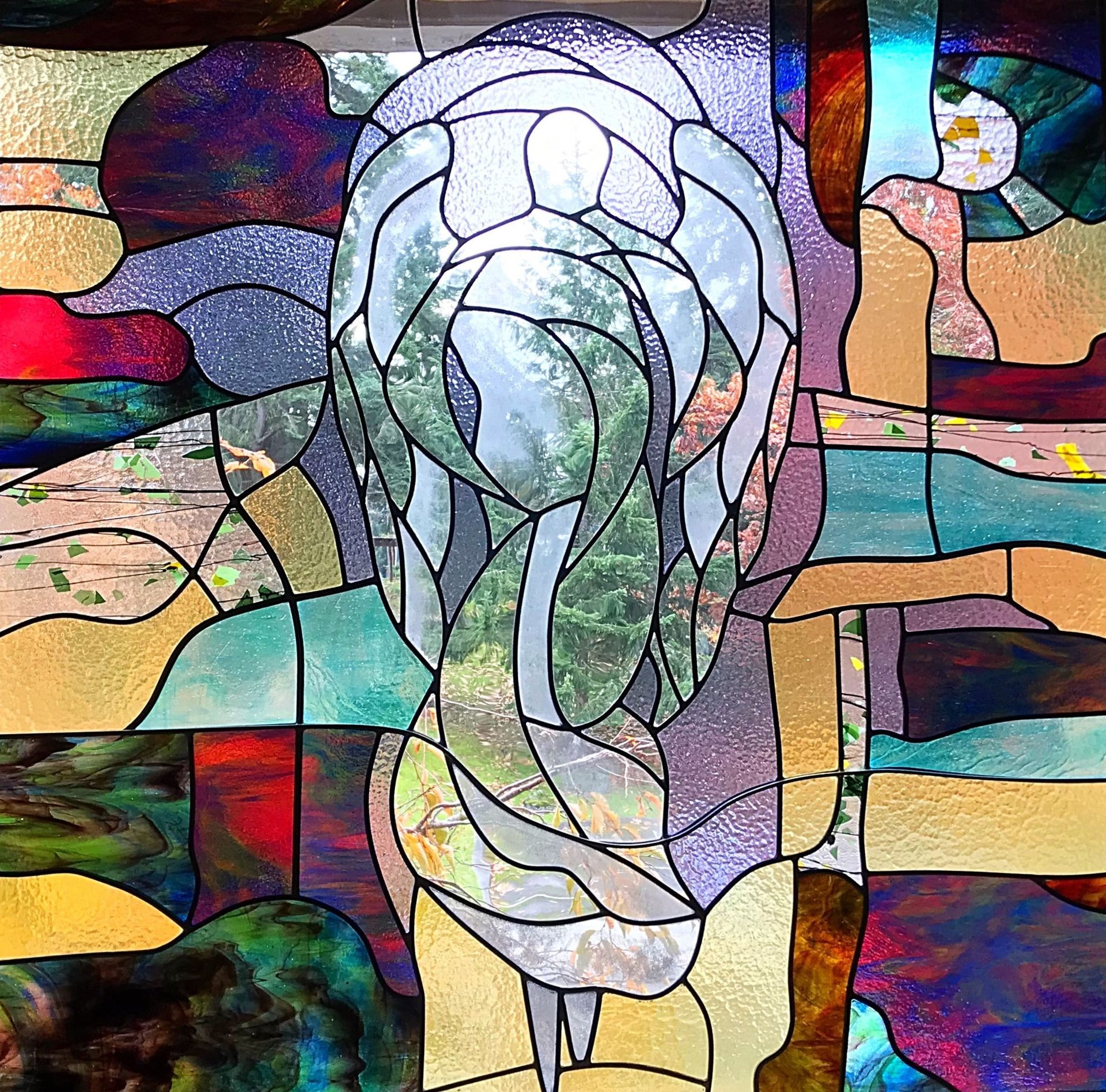
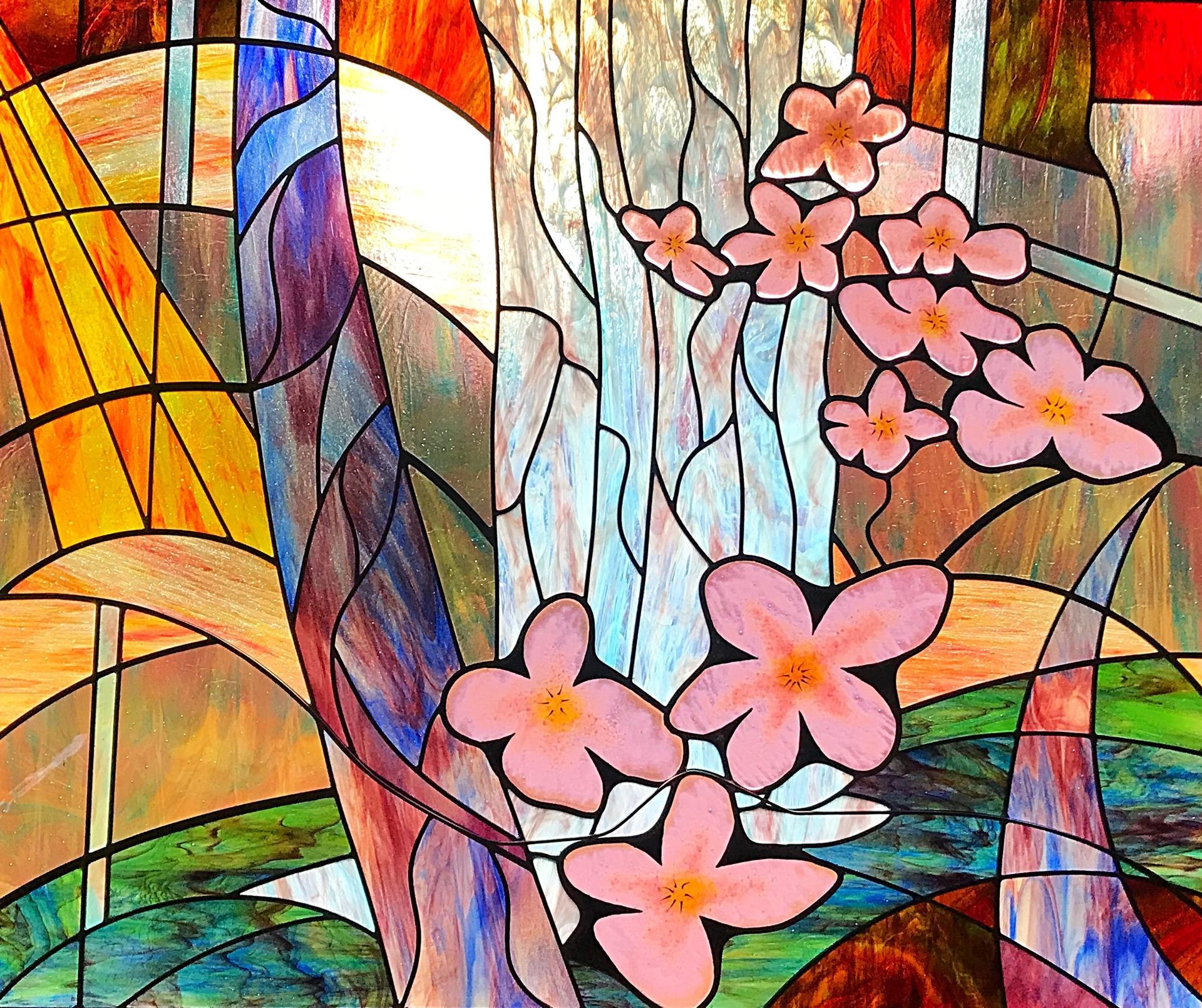
God is Beauty
“One thing I ask from the LORD, this only do I seek: that I may dwell in the house of the LORD all the days of my life, to gaze on the beauty of the LORD and to seek him in his temple.”
This window depicting the beauty of God looks at creation, God’s handiwork. Flowers, waterfall, sunbeam, mountains and meadows, all reflect the Master Artist.
God “is beauty itself,” St. Thomas Aquinas states. And God gives beauty to all created beings to the extent that they are ordered to God and to one another.
True beauty cannot exist in isolation, but only in relationship with God and with God’s creation. Although every being may not have aesthetic beauty, every being does have “transcendental beauty.” Every being, through its form and its ordering to God and to other creatures, is beautiful.
Sight, sound, smell, taste and touch help the mind apprehend aesthetical beauty. Love empowers the soul to “see” in created beings the beauty of God radiating forth. Love only sees beauty.
God loves beauty. The reason why we gravitate toward beauty is that God created us in the divine image.
Love Gives Life: Baptism
“Choose life, then, that you and your descendants may live, by loving the LORD, your God, heeding his voice, and holding fast to him. For that will mean life for you.”
Dt 30:19–20
“I am the way, the truth, the life”
John 14:6
This window depicts flowing water for the sacrament of baptism, through which God shares the divine life with us, making us children of God and members of the Body of Christ.
The window also depicts the symbol of The Tree of Life, mentioned three times in the Book of Genesis and four times in the Book of Revelation. God created humanity to live forever. But when sin entered the world, Adam and Eve were banished from the Garden, separated from the tree of life, and subject to physical death.
The Cross and Resurrection of Jesus have established a New Earth; our access to the tree of life is forever restored. In Revelation, after John describes the river of life, he mentions another striking feature: “On each side of the river stood the tree of life, bearing twelve crops of fruit, yielding its fruit every month. And the leaves of the tree are for the healing of the nations” (Revelation 22:2).
Made in God’s image, we are called to foster life. St. John Paul II spoke of the dramatic struggle between the “culture of life” and the “culture of death.” We are called respect, protect, love and serve life, every human life! Only in this direction will one find justice, development, true freedom, peace and happiness! It is the way we discover God’s presence among us.
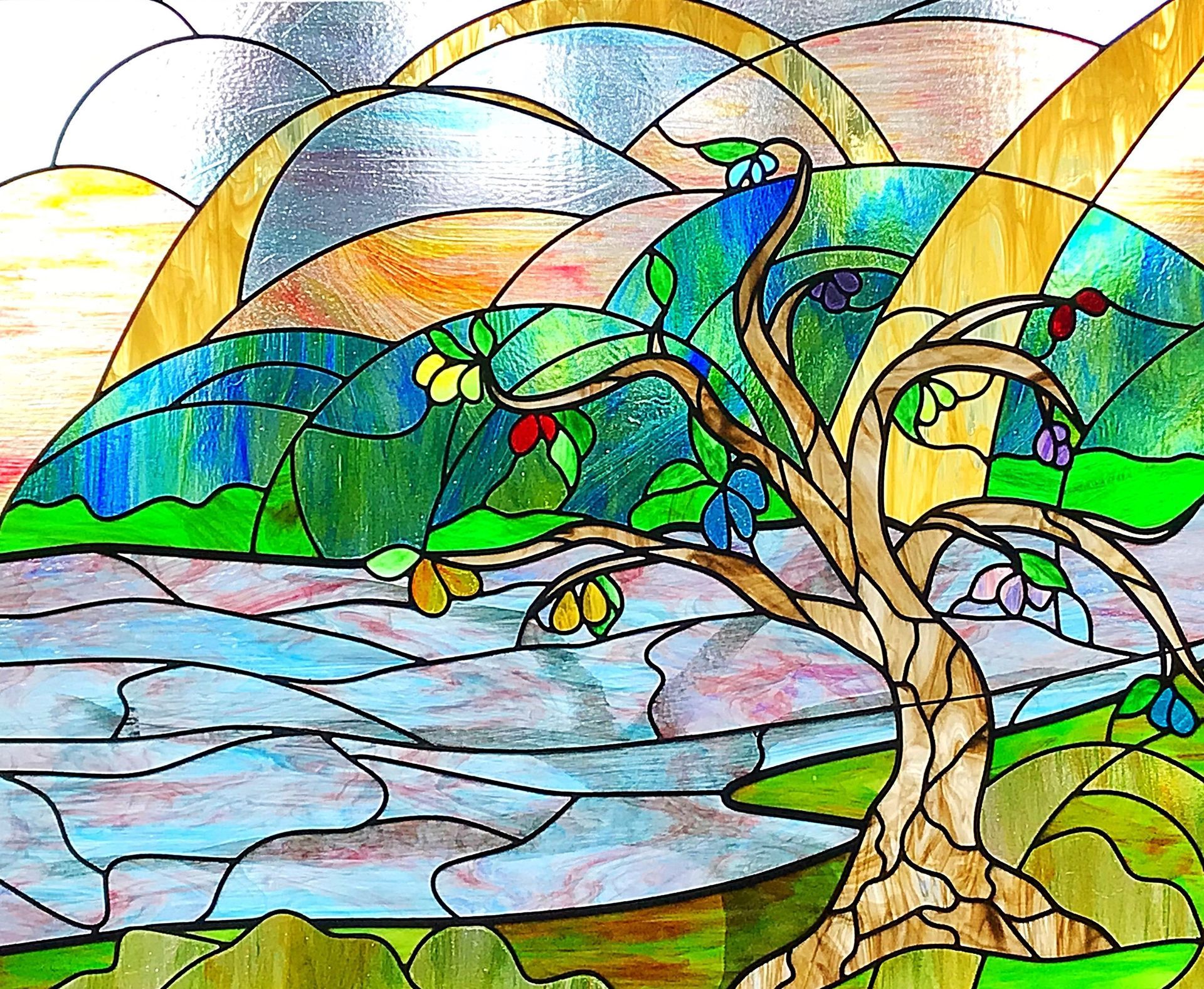
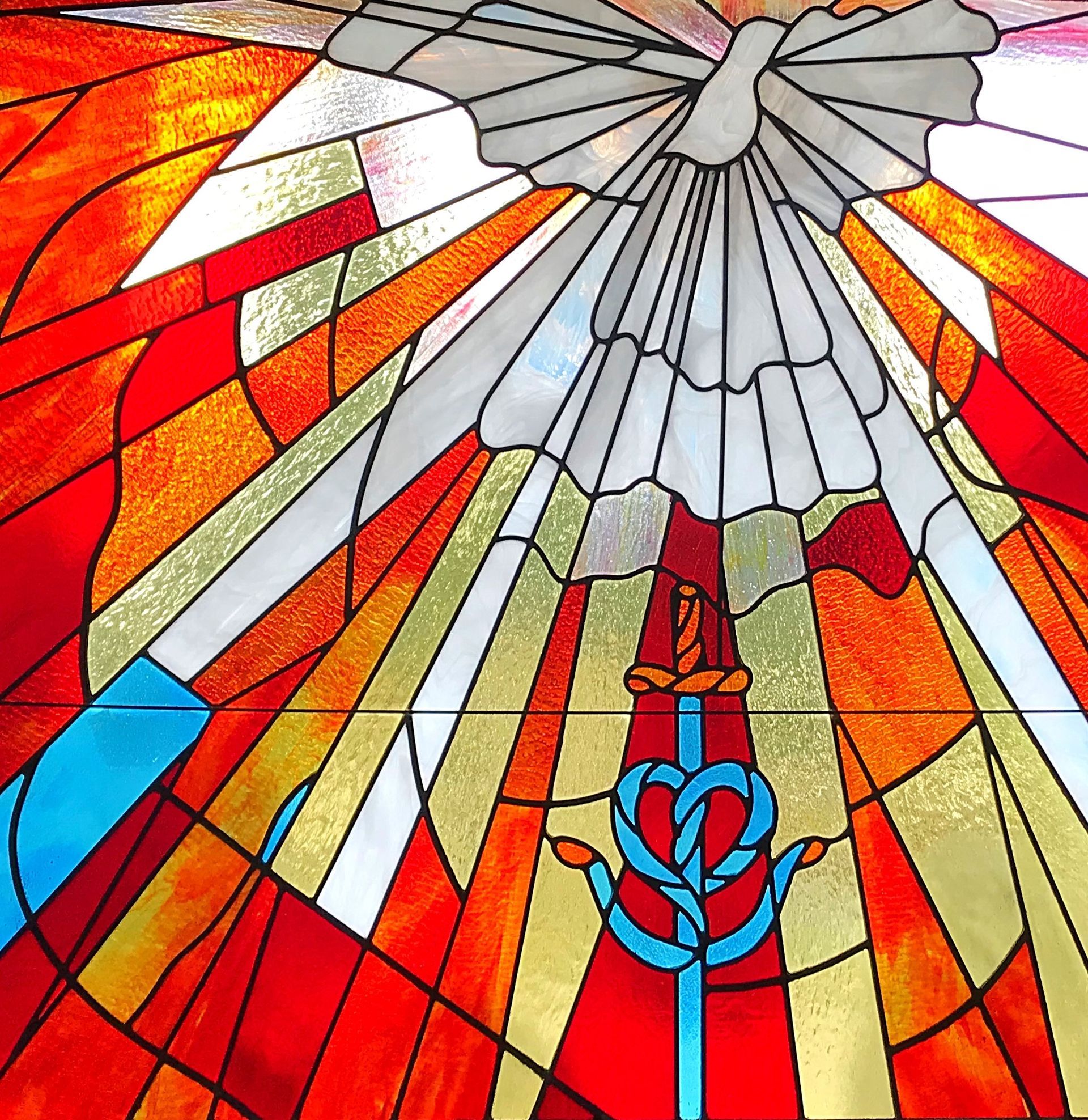
Love Emboldens: Confirmation
You will receive power when the Holy Spirit comes upon you, and you will be my witnesses in Jerusalem, throughout Judea and Samaria, and to the ends of the earth.
Acts 1:8
This window of the Holy Spirit features a cross, an anchor and a heart, representing the theological virtues of faith, hope and love.
The gift of the Holy Spirit, given in the sacrament of confirmation, makes us more like Christ and stronger members of the Church. The Spirit distributes varied gifts to the Church and calls each one of us to build up the holy people of God in unity and love. Under the guidance of the Holy Spirit, we are moved to live lives of service, as did Christ, who came not to be served but to serve.
The Christian life springs from faith, hope, and love; everything we do as Christians relates to these three virtues. They are the pledge of the presence and action of the Holy Spirit in our lives. Whenever faith, hope or love are lived out or strengthened in our lives, the Holy Spirit is at work.
Love Unites: Eucharist
I am the living bread that came down from heaven. If anyone eats of this bread, he will live forever. And this bread, which I will give for the life of the world, is My flesh.
The multicolored hands in this window reflect the diversity
of our St. Vincent de Paul Parish community, out of which rises a wonderful unity.
“Behold what you are. Become what you receive,” St. Augustine said of the Eucharist. When we say “Amen,” we are saying, “Yes! I believe this is the Body and Blood of Christ and that I will be the Body of Christ to others.”
The Eucharist unites us with one another in community, and strengthens us on our journey to the kingdom. Like all sacraments, the Eucharist is a sign that God is with us on our pilgrimage. In one of the Eucharistic prayers we pray: “Grant that we, who are nourished by the Body and Blood of your Son and filled with his Holy Spirit, may become one body, one spirit in Christ.”
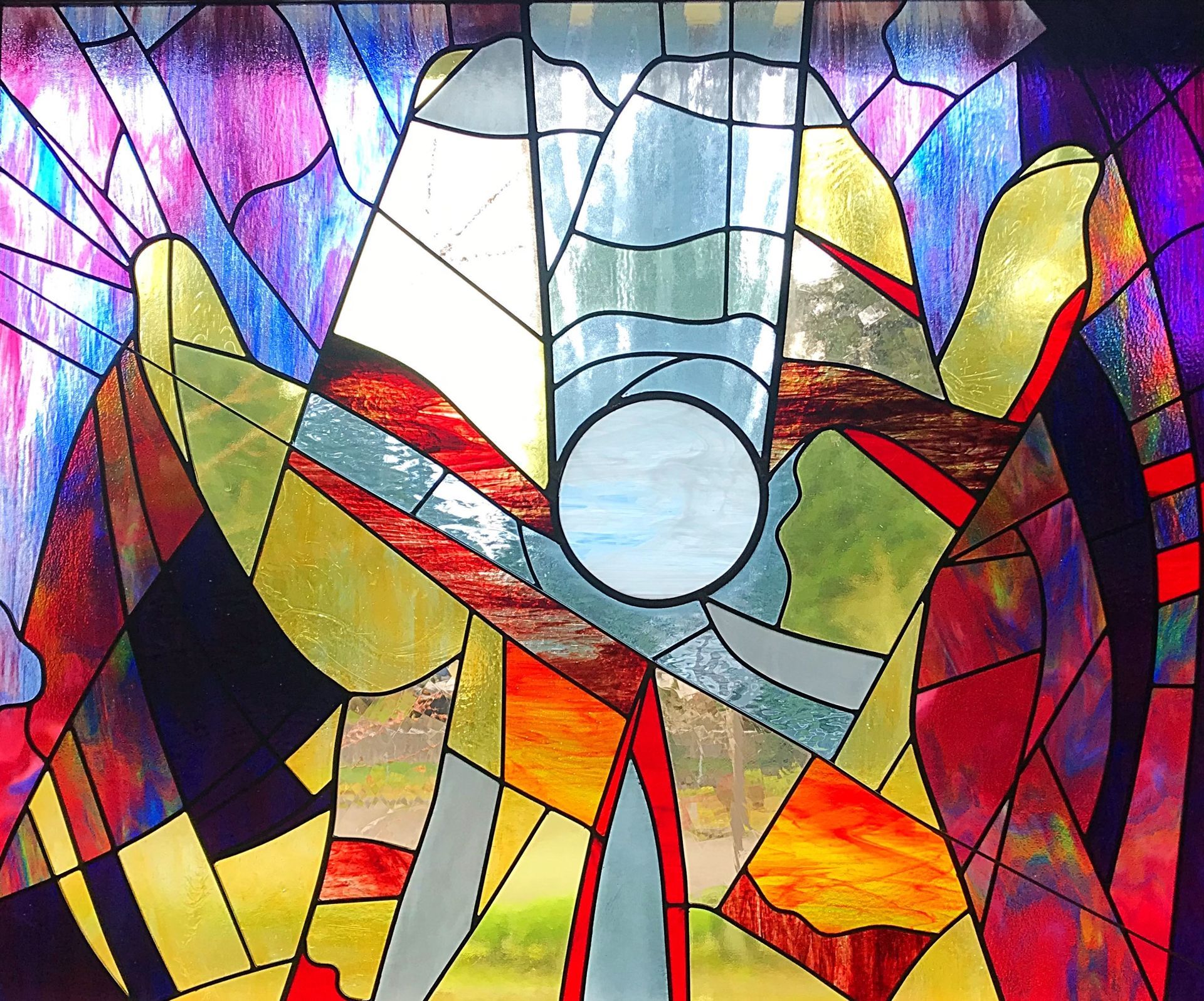
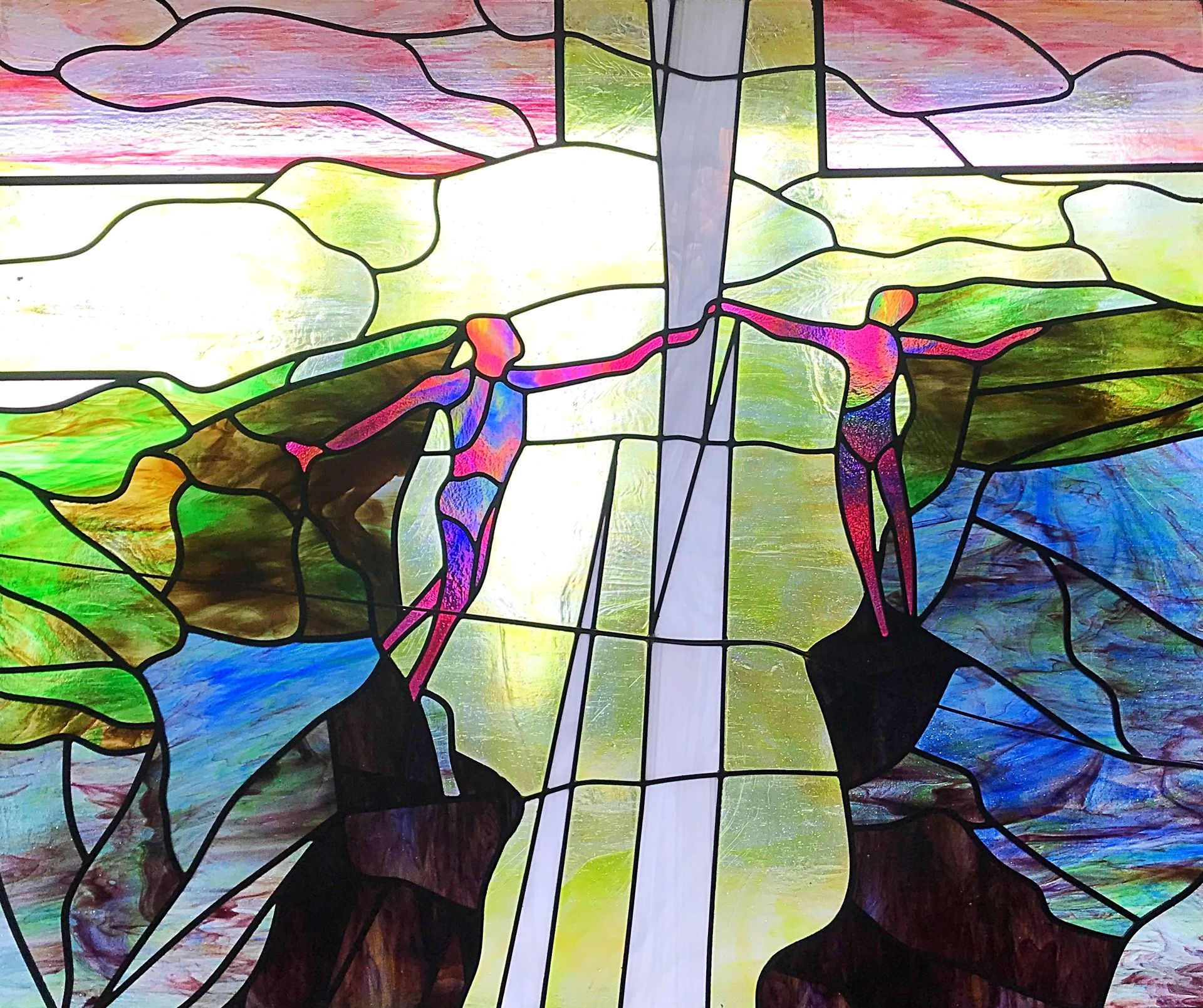
Love Reconciles: Penance
Jesus breathed on them and said, “Receive the Holy Spirit. If you forgive anyone his sins, they are forgiven.”
John 20:23
The two individuals reach across a chasm of divide in this window, representing God’s presence when forgiveness is offered and received.
In one of the Eucharistic Prayers for Reconciliation, we pray: “By your spirit, you move human hearts that enemies may speak to one another again, adversaries join hands, and peoples seek to meet together.”
The two individuals’ touch is similar to Michelangelo’s touch of God in the Sistine Chapel, when Adam became a living being. Reconciliation breathes new life and possibilities.
Love Heals: Anointing of the Sick
When evening came, many who were demon-possessed were brought to Jesus, and He drove out the spirits with a word and healed all the sick.
Matthew 8:16-17
Just as Moses lifted up the snake in the wilderness, so the Son of Man must be lifted up, that everyone who believes in Him may have eternal life.
John 3: 14-15
Symbols of healing are featured in this window. The pole alludes to the Book of Numbers, when Moses made a bronze serpent that became a source of healing to the people. The olive plant and the sun are both Native American and biblical healing symbols. “But for you who revere my name, the sun of righteousness will rise with its healing rays” (Malachi 4:2).
Throughout the Gospels, Jesus showed compassion for the sick. When Jesus sent out his disciples, he told them to anoint the sick with oil and bring healing. Visiting the sick is included in the Great Judgement parable, when the Lord tells us we minister to him when we minister to the least of his brothers and sisters.
Our prayer for the sick brings the grace of the Holy Spirit by which the whole person is brought to greater health, trust in God is encouraged and strength is given to resist temptation and anxiety.
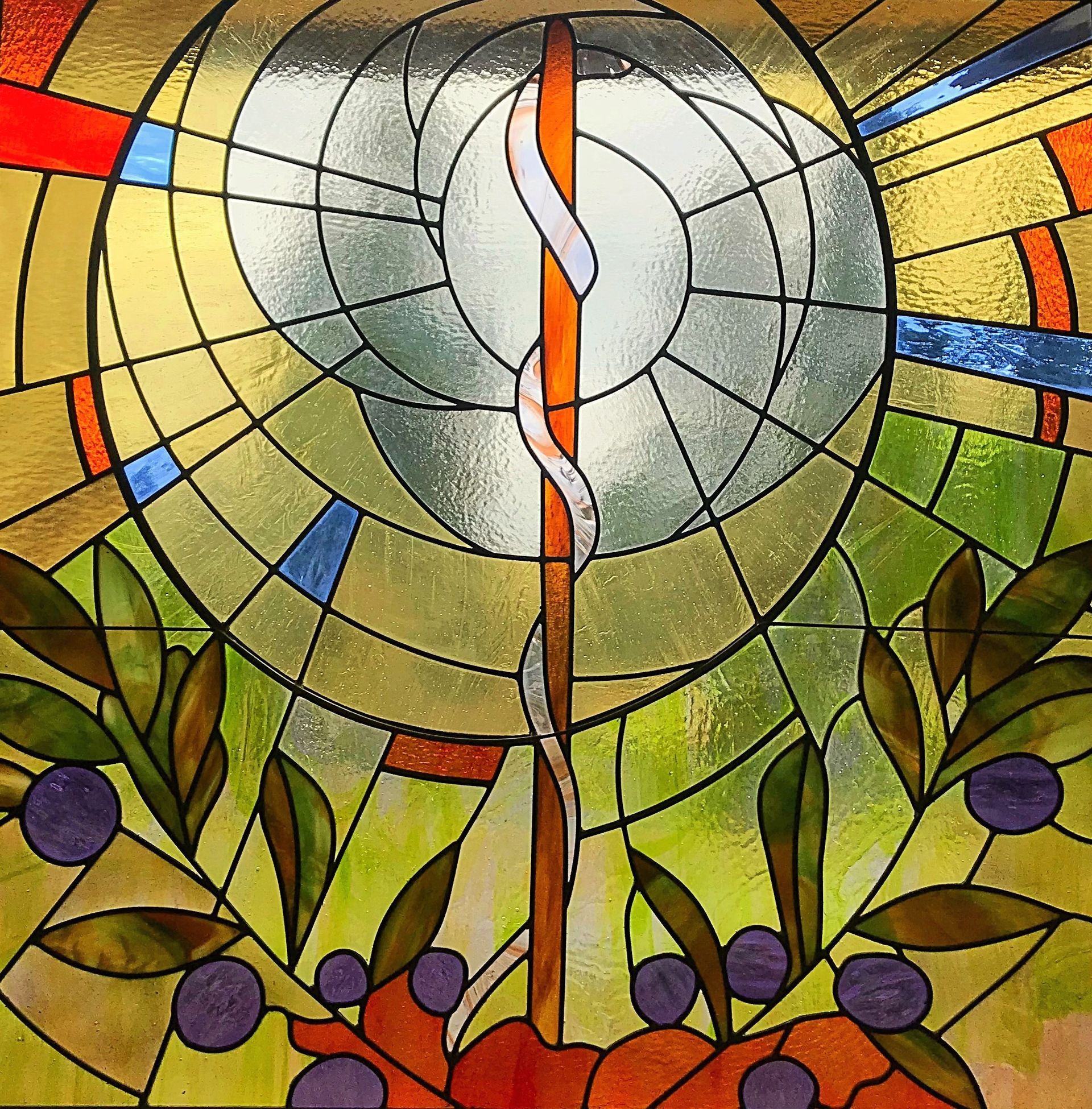
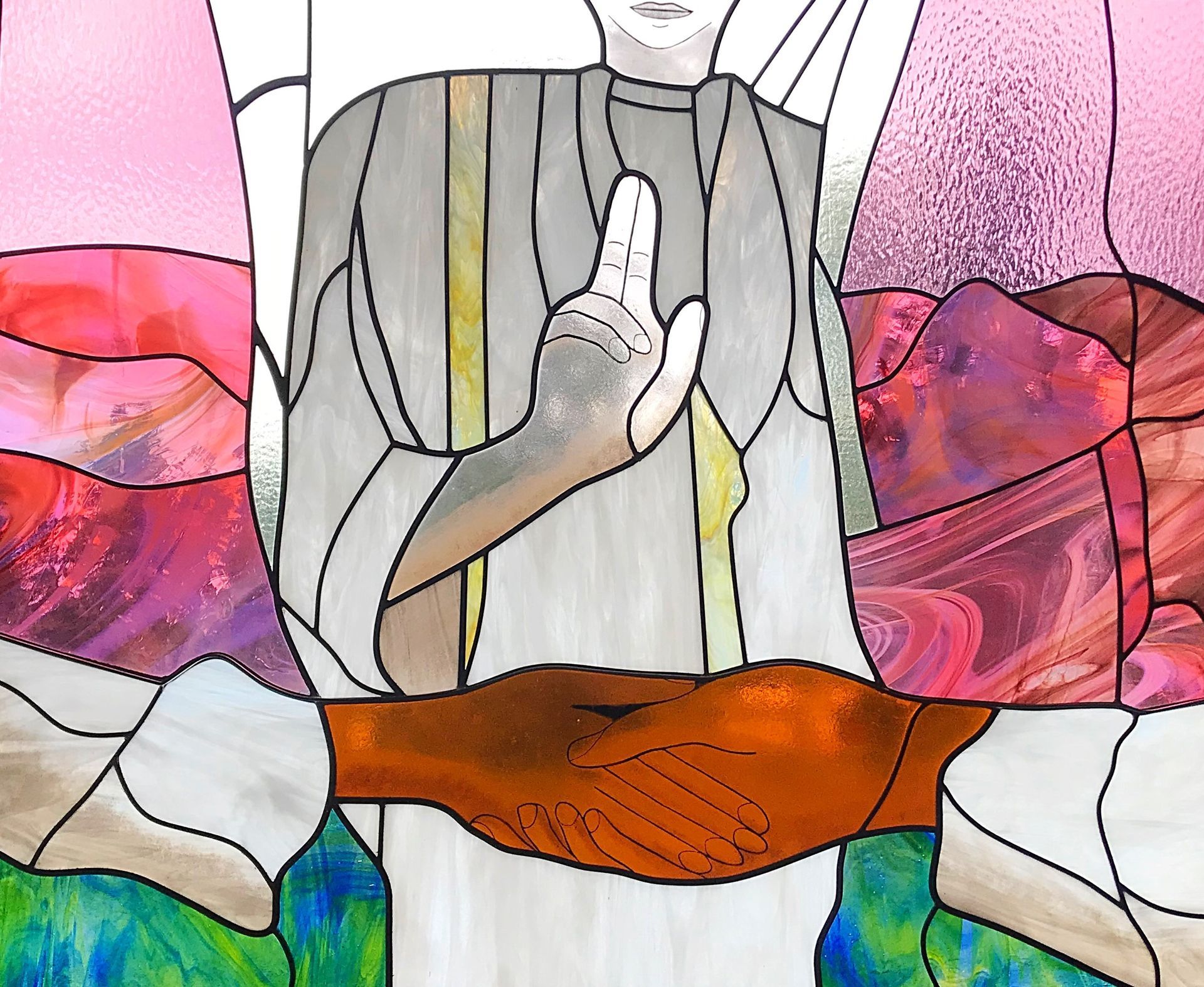
Love Serves and Commits:
Marriage and Holy Orders
This is my commandment: love one another as I have loved you
John 15:12
This window shows a couple joining hands as they enter the marriage covenant. The hand of a deacon, priest or bishop is extended in blessing.
Jesus came among us not to be served, but to serve. In marriage, a couple enter into a partnership of life and love by which they freely give themselves to each other and accept each other. Just as Christ loved the Church and gave himself up for her, Christian spouses also strive to nurture and foster their union in equal dignity, mutual giving and undivided love that flows from the divine font of charity.
In holy orders, individuals are called to share in the ordained priesthood of Christ. They are appointed to share in the ministry of salvation that Christ accomplished in the world. They are called to a ministry of service to the Church and to build up by Word and sacrament the Christian communities to which they are sent.
St. Vincent de Paul
Catholic Church
30525 8th Ave S,
Federal Way, WA 98003,
253-839-2320
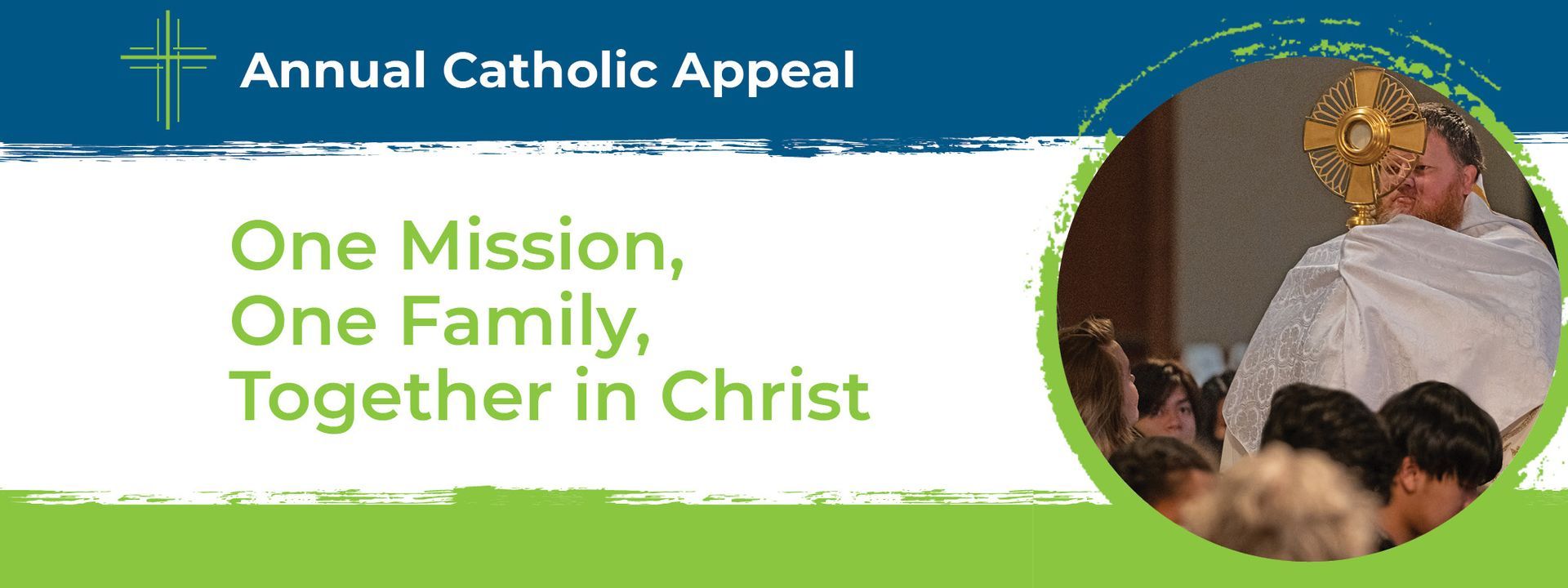
MISSION
Inspired by the Holy Spirit and empowered by the Sacraments, our diverse community worships, serves and grows in the love and knowledge of Jesus.
FOCUS
To accompany one another into a year of favor, through Eucharistic revival, with openness to being made new.
IDENTITY
We are Eucharistic people who pray, serve, play, and stay together with Jesus, and one another.
VISION
We are a growing Catholic community united and passionate in deepening and sharing our relationship with Jesus Christ through justice, love, and compassion.
